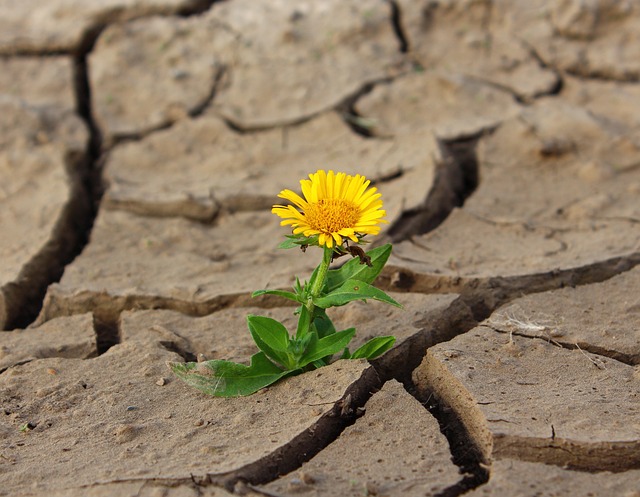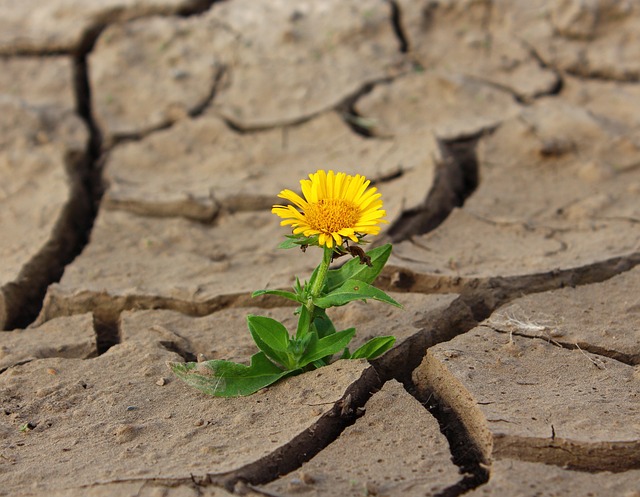when you find yourself in the great outdoors? Whether you’re an experienced hiker or just starting out, it’s important to always be prepared for any situation. That’s why having a well-equipped survival kit is essential. In this article, we’ll discuss the must-have items for a survival kit, so you can feel confident and safe on your outdoor adventures.
First and foremost, a good survival kit should include basic first aid supplies. You never know when a minor injury or accident could happen, and having the necessary supplies can make all the difference. Items such as bandages, antiseptic wipes, and pain relievers should be at the top of your list.
In addition to first aid supplies, it’s also essential to have reliable tools in your survival kit. A multipurpose knife is a great item to have on hand, as it can be used for various tasks such as cutting rope or preparing food. A fire starter is also crucial, as it can help you stay warm and cook food in an emergency situation.
Lastly, don’t forget to pack enough food and water for your outdoor adventure. It’s important to have non-perishable food items that are easy to prepare and provide enough energy to keep you going. Water is also essential for hydration, so bring along a portable water filter or purification tablets to ensure a safe and clean water supply.
Now that you know the essential items for a survival kit, you can start preparing for your next outdoor adventure with confidence. Remember, being prepared is the key to a successful and safe experience in the great outdoors. In our next article, we’ll delve deeper into each item and provide you with more tips for creating a well-rounded survival kit. Stay tuned!
Essential Items for a Survival Kit
When heading out into the great outdoors, whether for a hiking trip, camping excursion, or any other type of outdoor adventure, it is essential to be prepared for any situation that may arise. One of the most important aspects of preparation is having a well-equipped survival kit. A survival kit serves as your lifeline in emergency situations and can make the difference between life and death. In this article, we will outline the essential items for a survival kit to ensure that you are well-prepared for any unexpected circumstances.
Water and Water Filtration
One of the most vital items in any survival kit is water and means to purify it. Dehydration can pose a significant threat to your well-being, especially in emergency situations. Therefore, it is crucial to carry an adequate supply of water and tools for water filtration. Here are a few essential items to include in your survival kit:
- Water Bottles or Containers: Carry lightweight and durable water bottles or containers to store and carry water.
- Water Purification Tablets or Treatment: These tablets or treatment drops can effectively purify water by killing bacteria and viruses.
- Portable Water Filters: Invest in a portable water filter that removes impurities and makes water safe to consume.
- Collapsible Water Bags: These space-saving collapsible water bags can be handy for storing and transporting water.
- Rainwater Collection Methods: In case you run out of bottled water, having a rainwater collection method, such as a tarp or plastic sheeting, can be useful for collecting rainwater and ensuring a fresh water supply.
Food and Cooking Supplies
Food is another essential component of a survival kit. When facing an emergency or being stranded, you need food to maintain your energy levels and stay nourished. Here are some essential items to include in your survival kit:
- Non-perishable Food Items: Stock up on non-perishable food items such as energy bars, canned goods, and dehydrated meals that provide sustenance.
- Camping Stove or Portable Grill: A lightweight camping stove or portable grill can help you cook food efficiently outdoors.
- Cooking Utensils and Cookware: Pack a set of cooking utensils and lightweight cookware, such as a pot and pan.
- Eating Utensils and Plates: Include reusable or disposable eating utensils and plates for easy food consumption.
- Food Storage Containers: Carry food storage containers to keep your food fresh and protected from pests and the elements.
Shelter and Bedding
Creating shelter is crucial in survival situations, providing protection from the elements and ensuring your comfort during the nighttime. Here are some essential shelter and bedding items to include in your survival kit:
- Tent or Tarp: A lightweight and compact tent or tarp can provide shelter from rain, wind, and other harsh conditions.
- Sleeping Bags or Blankets: Carry sleeping bags or blankets suitable for the climate and season to keep you warm and comfortable.
- Sleeping Mats or Air Mattresses: Ensure a comfortable rest with sleeping mats or air mattresses that provide insulation and cushioning.
- Pillows and Comfort Items: Pack small pillows or comfort items to help you relax and sleep better in your temporary shelter.
- Emergency Blankets: Have emergency or space blankets in your kit as they retain body heat and provide insulation.
Fire Starters and Light Sources
Fire not only provides warmth but also serves as a valuable signaling tool and a means to cook food. Additionally, having reliable light sources is crucial, especially during nighttime or in low-light situations. Here are some essential fire starters and light sources to include in your survival kit:
- Waterproof Matches or Lighters: Carry waterproof matches or lighters to easily light a fire, even in wet conditions.
- Fire Starters or Fire-Making Kits: Include fire starters, such as waterproof tinder or fire-making kits, in case matches or lighters fail.
- Flashlights or Headlamps: Pack compact and high-powered flashlights or headlamps to navigate in the dark.
- Glow Sticks or Chem Lights: These inexpensive light sources can be a reliable backup when batteries run out.
- Candles or Lanterns: Candles or lanterns can provide ambient light and a source of heat in your shelter.
First Aid and Medications
In any survival situation, injuries and illnesses can occur. Having a well-stocked first aid kit can help treat minor to moderate injuries and provide essential medical supplies. Here are some essential first aid and medication items to include in your survival kit:
- First Aid Kit: Purchase a comprehensive first aid kit that includes various bandages, dressings, and supplies for wound care.
- Bandages and Dressings: Have an assortment of bandages and dressings to address cuts, wounds, and sprains.
- Antiseptic Ointments: Pack antiseptic ointments or wipes to prevent infections and promote wound healing.
- Painkillers and Medications: Include over-the-counter painkillers, such as ibuprofen or acetaminophen, as well as any necessary prescription medications.
- Insect Repellent: Protect against insect bites and stings by carrying insect repellent in your survival kit.
Navigation and Communication
In emergency situations, knowing your location and having a means to communicate with others can be life-saving. Here are some essential navigation and communication items to include in your survival kit:
- Map and Compass: Carry a detailed map and a reliable compass to navigate your surroundings accurately.
- GPS Device or Navigation App: Invest in a portable GPS device or have a navigation app on your smartphone for precise location tracking.
- Whistle or Signal Mirror: Use a whistle or signal mirror to attract attention and communicate with rescuers in case of emergencies.
- Cell Phone or Satellite Phone: Keep a fully charged cell phone or satellite phone with emergency contacts programmed for communication.
- Two-Way Radios or Walkie-Talkies: Carry two-way radios or walkie-talkies to communicate with your group members in the vicinity.
Tools and Multi-Purpose Items
Having versatile tools and multi-purpose items can significantly aid in survival situations, allowing you to perform essential tasks and solve problems. Here are some essential tools and multi-purpose items to include in your survival kit:
- Pocket Knife or Multi-Tool: Pack a reliable pocket knife or multi-tool that can serve various purposes like cutting, opening cans, or repairing gear.
- Paracord or Rope: Have a length of paracord or rope for shelter building, securing gear, and other utility purposes.
- Duct Tape: Carry a small roll of duct tape, which has countless uses like gear repairs and makeshift fixes.
- Shovel or Trowel: Include a compact and lightweight shovel or trowel for digging fire pits, latrines, or clearing pathways.
- Emergency Cash: Keep some emergency cash, as it may be necessary to purchase supplies or services in case of an extended emergency.
Clothing and Personal Protection
Dressing appropriately for the weather and protecting yourself from environmental hazards is crucial in survival situations. Here are some essential clothing and personal protection items to include in your survival kit:
- Layered Clothing for Various Weather: Pack clothing suitable for different weather conditions and layering options for temperature regulation.
- Rain Gear or Poncho: Carry waterproof rain gear or a poncho to stay dry during rainfall.
- Sturdy Boots or Shoes: Wear sturdy boots or shoes that provide support and protection against rough terrains.
- Hats, Gloves, and Scarves: Have hats, gloves, and scarves to protect your extremities from cold temperatures and sun exposure.
- Sunscreen and Sunglasses: Protect your skin and eyes from harmful sun rays by including sunscreen and sunglasses in your kit.
Emergency Signaling Devices
In critical situations, being able to signal for help is vital to increase your chances of being located and rescued. Here are some essential emergency signaling devices to include in your survival kit:
- Whistle: Carry a whistle that can be heard from a distance to attract attention.
- Signal Mirror: Include a lightweight and compact signal mirror to reflect sunlight and alert potential rescuers.
- Flares or Smoke Signals: Pack flares or smoke signals that can be seen from a distance to signal distress.
- Personal Locator Beacon (PLB): If possible, invest in a personal locator beacon that can transmit your location to emergency services.
Conclusion
When venturing into the great outdoors, it is crucial to be prepared for any unforeseen circumstances. Building a comprehensive survival kit with the essential items mentioned in this article is the first step towards ensuring your safety and well-being. Remember to regularly check and replenish your supplies, tailor them to your specific needs, and familiarize yourself with how to properly use each item in your kit. With the right preparation, you can confidently embark on your outdoor adventures, knowing that you are equipped to handle any unexpected challenges that may arise. Stay safe, stay prepared, and enjoy your outdoor experiences to the fullest.

